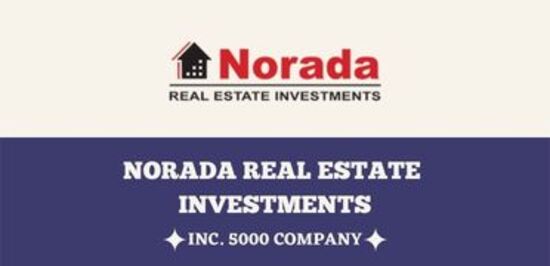As we approach the end of November, 30-year fixed mortgage rates are hovering around or even dipping slightly below the 6% mark, a welcome development that’s been absent for a while. According to the latest data from Zillow, the national average for a 30-year fixed mortgage is sitting right at 6.00%.
This brings us to some of the most encouraging financing terms we’ve seen in months and presents a compelling reason for prospective buyers to consider making a move sooner rather than later. While these rates are still a far cry from the rock-bottom figures of the pandemic era, this dip offers a crucial bit of encouragement as we head into the final stretch of 2025.
30-Year Fixed Mortgage Rate Hits Multi-Month Lows, Offering a ‘Buy Now' Incentive
This recent downward trend is largely a response to the market anticipating potential rate cuts from the Federal Reserve, which could happen as early as December. This speculation has been steadily nudging mortgage rates lower, and the 6% barrier for a 30-year fixed loan feels like a significant psychological and practical milestone. For anyone looking to buy a home, this could be the incentive you've been waiting for – a chance to lock in a more affordable monthly payment and potentially a lower overall cost of borrowing.
The Power of the 6% Threshold for 30-Year Fixed Mortgages
The magic of a 30-year fixed mortgage is that it provides payment stability for decades. When the rate dips below 6%, the impact on your monthly payment can be substantial, especially on a larger loan amount. Let's look at the numbers again from Zillow, focusing on what this means for you:
- 30-year fixed rates are at a national average of 6.00%. This is a key figure to watch.
- For comparison, the 15-year fixed rate stands at 5.50%. While lower fixed, the monthly payment will be higher.
- The 20-year fixed rate is at 5.86%. This offers a middle ground for some buyers.
My experience tells me that breaking below 6% on a 30-year fixed is a significant psychological win for the market. It makes the prospect of buying a home feel more attainable for a broader range of people. While rates were in the 7% range earlier, a drop to 6% can save hundreds of dollars per month on a typical mortgage, making a real difference in affordability. And remember, these are national averages. Many lenders are now actively competing to offer rates just below 6%, so diligent shopping is key to capturing the best possible deal.
Why It's a ‘Buy Now' Incentive, But With Caveats
This dip in rates acts as a clear ‘buy now' incentive for those who have been on the fence. Housing affordability, while challenging due to sustained high home prices, becomes more manageable with lower borrowing costs.
- Reduced Monthly Payments: As illustrated before, a difference between 7% and 6% can save you thousands over the life of the loan. This improved affordability can either help you buy a more desirable home or simply reduce your monthly financial burden.
- Overcoming Buyer Hesitancy: After a period of rapidly rising rates, seeing them trend downward can restore confidence in the market. It signals that lenders are eager to do business, and buyers might face less competition than at the peak of demand.
However, it’s crucial to temper expectations. As I mentioned, rates remain significantly higher than the ultra-low pandemic-era lows. The 2-3% rates are a relic of a unique economic period and are not expected to return.
Refinancing Opportunities Emerge from Lower Rates
This shift is also creating potential refinancing opportunities. If you secured a mortgage earlier in the year when rates were higher, it might be time to check if you can benefit from a lower rate now.
Here's a look at the refinance rates from Zillow:
- 30-year fixed refinance: 6.14%
- 15-year fixed refinance: 5.60%
Even though these refinance rates are slightly higher than the purchase rates, the gap has narrowed considerably. For homeowners who borrowed at, say, 7% or 7.5%, refinancing to a 6.14% rate could still lead to substantial savings. I always advise homeowners to:
- Check your current rate: Know what you're paying now.
- Get quotes: Don't assume refinancing isn't worthwhile. Contact a few lenders to see what offers you can get.
- Consider loan recasting: Sometimes, a lender can adjust your payment schedule without a full refinance if you've made a significant lump-sum payment.
Stability Expected, But Watch for Builder Incentives
Looking ahead, analysts seem to agree that we can expect a degree of stability for the remainder of December. A sharp, continued drop in mortgage rates is considered unlikely in the immediate future. However, the market is dynamic.
What is interesting, though, is the response from homebuilders. In many areas, builders are actively trying to move inventory. This can translate into:
- Price Reductions: Some builders are directly cutting the asking price of their homes.
- Rate Buydowns: A common incentive is offering to “buy down” your interest rate for a period, meaning you pay a lower rate for the first few years of your mortgage. This can significantly reduce your initial payments.
These builder incentives, coupled with the slightly lower national rates, create a more favorable environment for buyers looking for new construction. It's a sign that the market is adjusting to this higher-rate era.
Long-Term Forecasts: A Stable, Higher Rate Environment?
When I look at the longer-term forecasts, the picture is one of cautious optimism and relative stability, albeit at a higher level than the pandemic years.
- Early November Forecasts (2025): These suggested that 30-year fixed rates would likely settle between 6.1% and 6.3% by the end of November. The fact that we’re now seeing averages at 6.00% indicates slightly better conditions than predicted.
- End of 2025/2026 Forecasts (October Predictions): Projections from October indicated that 30-year rates might hover around 6% or even higher through 2026. Fannie Mae, for instance, projects a dip to 5.9% by the fourth quarter of 2026, which aligns with a potential continued easing, but still above current pandemic lows. The Mortgage Bankers Association has a more conservative outlook, anticipating an average rate of 6.4% throughout 2026.
This suggests that while we might see some fluctuations, the era of consistently sub-5% rates is likely behind us for the foreseeable future. Therefore, capitalizing on the current dip below 6% for a 30-year fixed mortgage could be a sound strategy for long-term financial planning.
Invest Smartly in Turnkey Rental Properties
With rates dipping to their lowest levels, investors are locking in financing to maximize cash flow and long-term returns.
Norada Real Estate helps you seize this rare opportunity with turnkey rental properties in strong markets—so you can build passive income while borrowing costs remain historically low.
🔥 HOT NEW LISTINGS JUST ADDED! 🔥
Talk to a Norada investment counselor today (No Obligation):
(800) 611-3060
Also Read:
- Mortgage Rates Predictions Backed by 7 Leading Experts: 2025–2026
- Mortgage Rate Predictions for the Next 3 Years: 2026, 2027, 2028
- 30-Year Fixed Mortgage Rate Forecast for the Next 5 Years
- 15-Year Fixed Mortgage Rate Predictions for Next 5 Years: 2025-2029
- Will Mortgage Rates Ever Be 3% Again in the Future?
- Mortgage Rates Predictions for Next 2 Years
- Mortgage Rate Predictions for Next 5 Years
- Mortgage Rate Predictions: Why 2% and 3% Rates are Out of Reach
- How Lower Mortgage Rates Can Save You Thousands?
- How to Get a Low Mortgage Interest Rate?
- Will Mortgage Rates Ever Be 4% Again?



